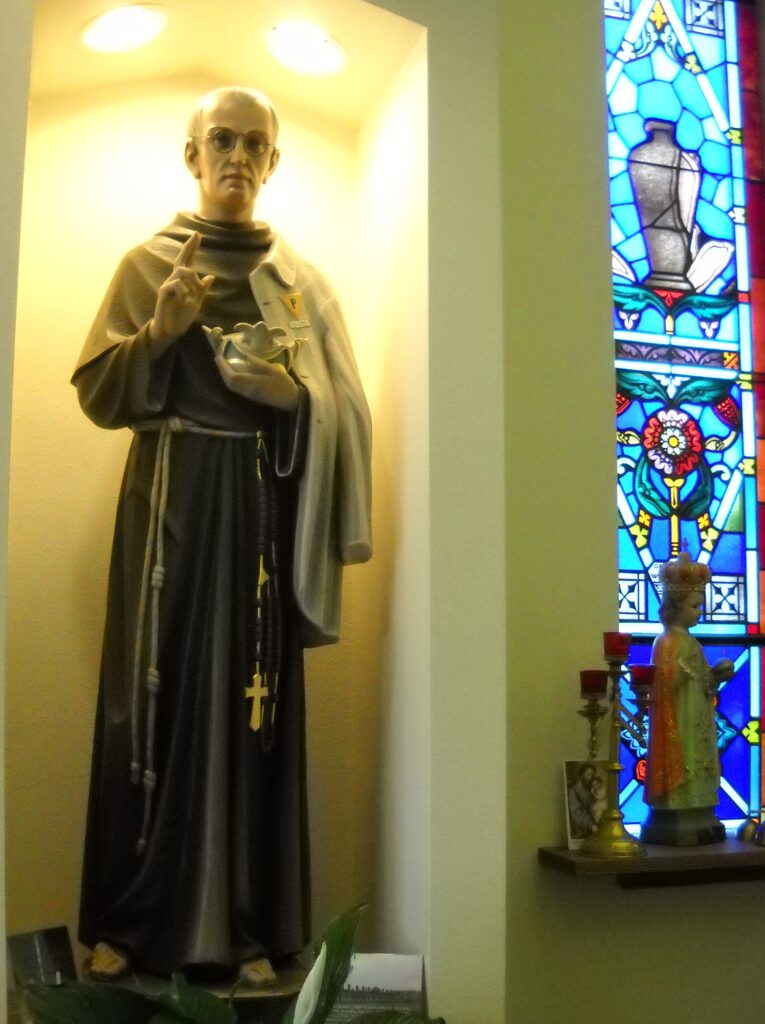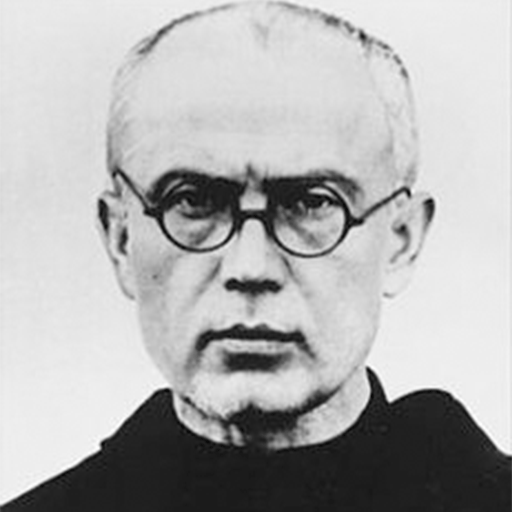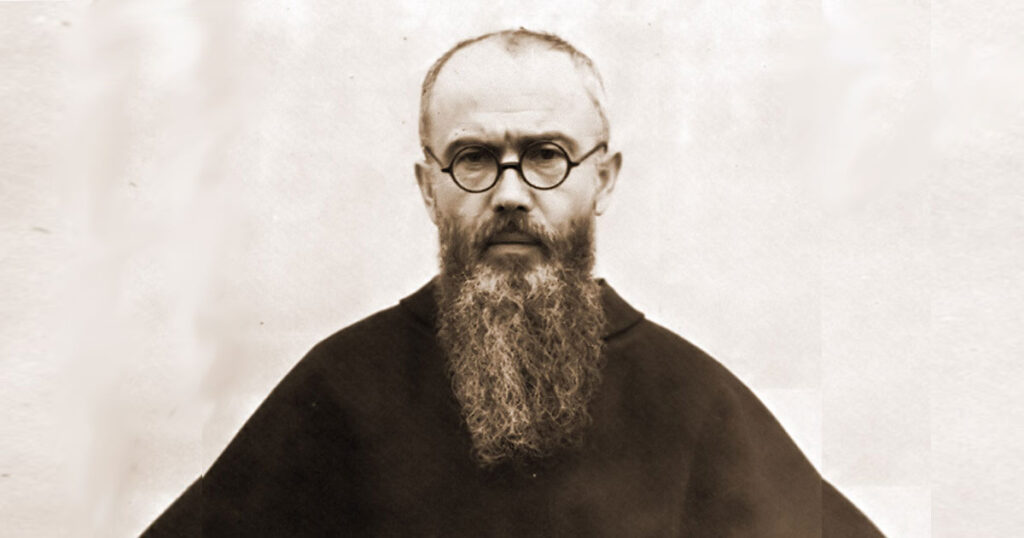St. Maximilian Kolbe, Our Patron Saint


Maximilian Maria Kolbe, O.F.M. Conv. was a Polish Conventual Franciscan friar, who volunteered to die in place of a stranger in the German death camp of Auschwitz, located in German-occupied Poland during World War II.
Raymund Kolbe was born on January 8, 1894 in Zduńska Wola, in the Kingdom of Poland, which was a part of the Russian Empire, the second son of weaver Julius Kolbe and midwife Maria Dąbrowska. His father was an ethnic German and his mother was Polish. He had four brothers. Shortly after his birth, his family moved to Pabianice.
In 1907, Kolbe and his elder brother Francis Joined the Conventual Franciscans. They enrolled at the Conventual Franciscan Minor Seminary in LWOW later that year. In 1910, Kolbe was allowed to enter the novitiate, where he was given the religious name Maximilian. In 1918, Kolbe was ordained a priest.
After the outbreak of World War II, which started with the invasion of Poland by Germany, Kolbe was one of the few brothers who remained in the monastery, where he organized a temporary hospital. After the town was captured by the Germans, he was briefly arrested by them on September 19, 1939, but released on December 8th. He refused to sign the Deutsche Volksliste, which would have given him rights similar to those of German citizens in exchange for recognizing his German ancestry.
Upon his release he continued work at his monastery, where he and other monks provided shelter to refugees from Greater Poland, including 2,000 Jews whom he hid from German persecution in their friary in Niepokalanów. Kolbe also received permission to continue publishing religious works, though significantly reduced in scope. The monastery thus continued to act as a publishing house, issuing a number of anti-Nazi German publications.
On February 17, 1941, the monastery was shut down by the German authorities. That day Kolbe and four others were arrested by the German Gestapo and imprisoned in the Pawiak prison. On May 28th, he was transferred to Auschwitz as prisoner #16670.
Continuing to act as a priest, Kolbe was subjected to violent harassment, including beating and lashings, and once had to be smuggled to a prison hospital by friendly inmates. At the end of July 1941, three prisoners disappeared from the camp, prompting SS-Hauptsturmführer Karl Fritzsch, the deputy camp commander, to pick 10 men to be starved to death in an underground bunker to deter further escape attempts. When one of the selected men, Franciszek Gajowniczek, cried out, “My wife! My children!”, Kolbe volunteered to take his place.

According to an eye witness, an assistant janitor at that time, in his prison cell, Kolbe led the prisoners in prayer to Our Lady. Each time the guards checked on him, he was standing or kneeling in the middle of the cell and looking calmly at those who entered. After two weeks of dehydration and starvation, only Kolbe remained alive. “The guards wanted the bunker emptied, so they gave Kolbe a lethal injection of carbolic acid. Kolbe is said to have raised his left arm and calmly waited for the deadly injection. His remains were cremated on August 15th, the feast day of the Assumption of Mary.
On May 12, 1955, Kolbe was recognized as the Servant of God. Kolbe was declared venerable by Pope Paul VI on January 30, 1969, beatified as a Confessor of the Faith by the same Pope in 1971, and canonized as a saint by Pope John Paul II on October 10, 1982. Upon canonization, the Pope declared St. Maximilian Kolbe not a confessor, but a martyr. Wikipedia

